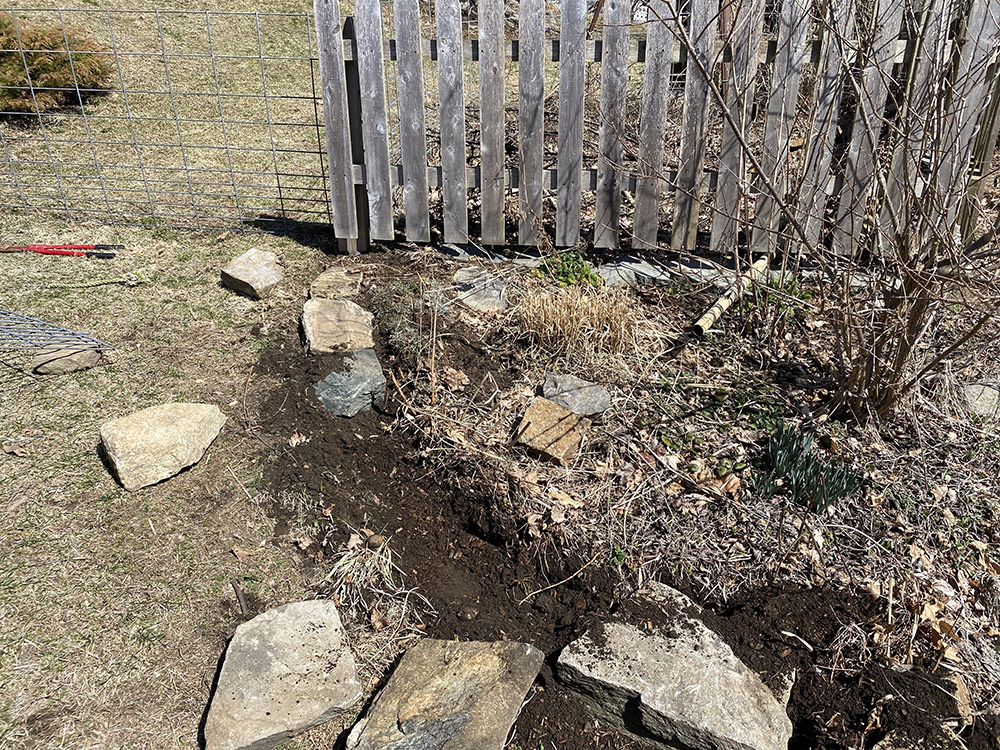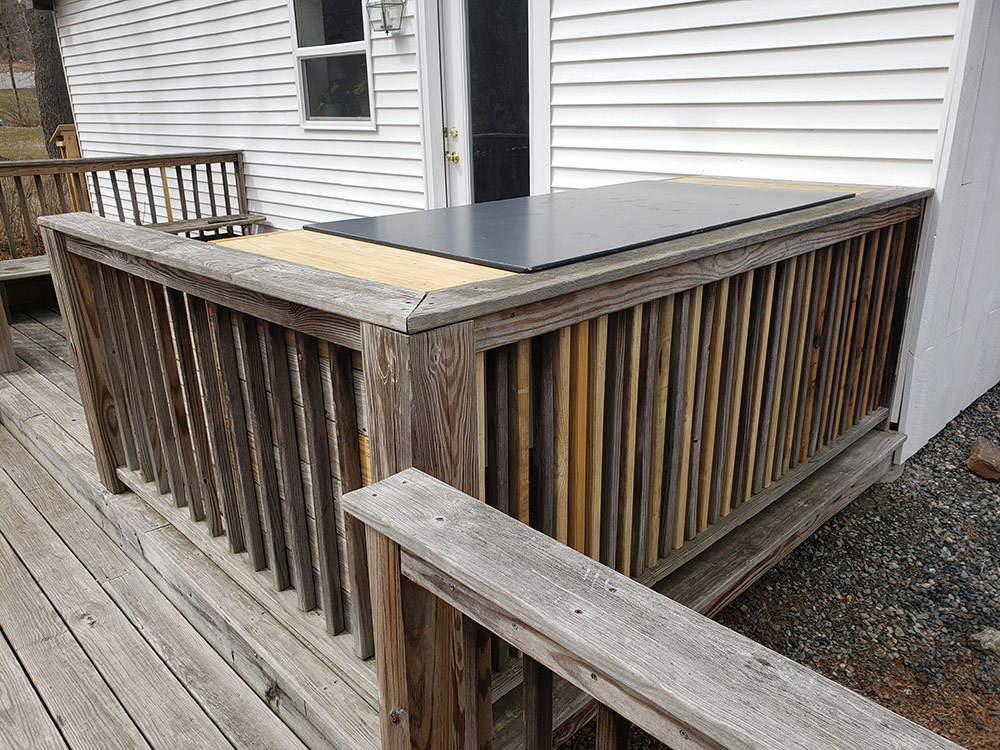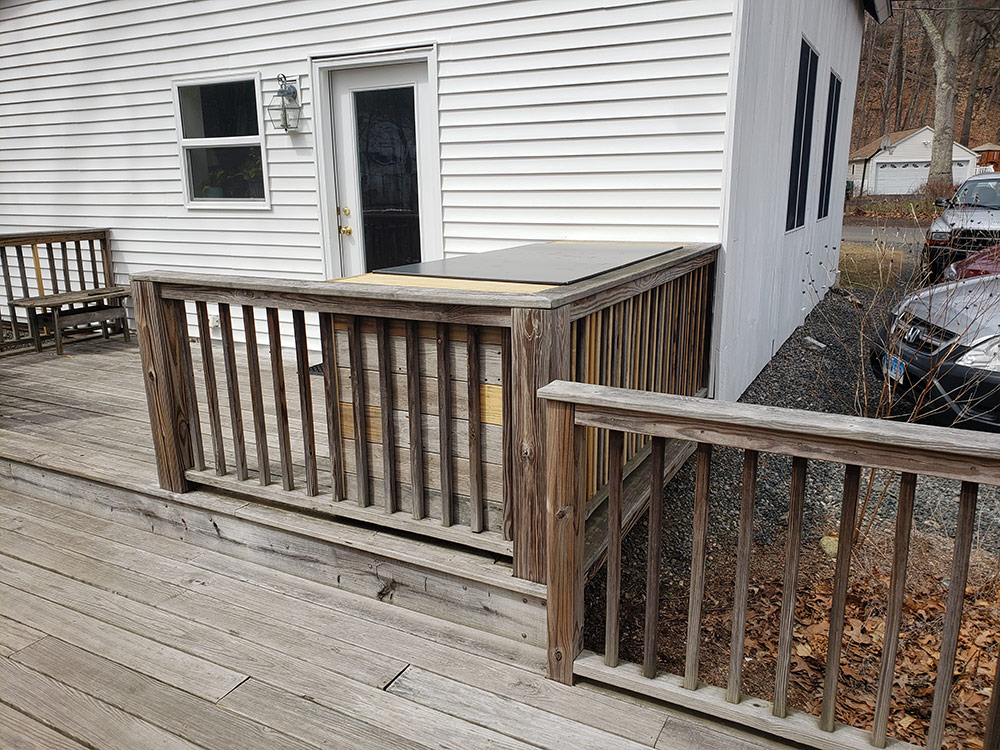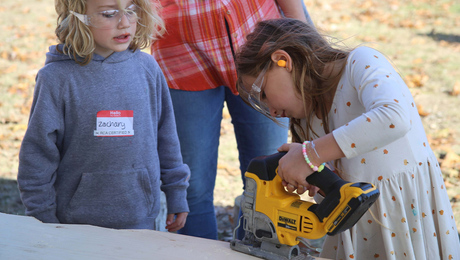Podcast 342: Thermally Broken Slabs, Wet Walls, and Reinforcing Block Foundations
Brian, Matt, and Patrick hear from listeners about job-site safety and fence posts before taking questions about thermally broken slabs, construction training for Spanish speakers, and strengthening foundations in seismic zones.

Follow the Fine Homebuilding Podcast on your favorite app. Subscribe now and don’t miss an episode:
 |
 |
Help us make better episodes and enter for a chance to win an FHB Podcast T-shirt:
www.finehomebuilding.com/podcastsurvey
Dan describes the importance of safety on the job. Doug offers his thoughts on long-lasting fence posts. ChickenLips 412 shares the joy of trash-picked dishwashers. Joseph asks about thermal breaks between interior slabs and outdoor patios. Matt asks about our discussion on seasonally wet walls. Tim wants to know if he should reinforce his crawlspace foundation. Jeremy seeks training resources for Spanish-speaking members of his crew.
Editor Updates:
- Rob’s stone walls
- Patrick’s deck cabinet
- Jeff’s spring clean-up
- Brian’s home search
 |
 |
 |
 |
 |
 |
 |
Related Links:
Listener Feedback 1:
Dan writes: I have been listening to the FHB podcasts lately and am getting increasingly frustrated by the discussions you have at the end about workplace safety. Many of the speakers on your podcast know what is dangerous and how to mitigate the risk, but nonetheless, they seem to accept that many contractors do not follow basic safety practices. In residential home construction, are there no adverse consequences for not following basic safety and OSHA practices? If so, that indicates to me a weak safety culture and insufficient worker education.
I am now retired, and spent my career working on nuclear power plant modification projects. Now of course, nuclear power or other large industrial construction projects are a lot different than a residential home build. However, I believe many of the lessons I learned in a heavy construction industry would be useful to homebuiders who need to improve their safety culture.
1. Get over it…Staying safe is nurtured through continued reinforcement of correct behavior. If you’re a leader, supervisor, inspector, even customer who respects and values personnel safety, you need to speak up, coach, encourage, and enforce safe practices.
2. Establish safety requirements for the workplace (usually based on OSHA and manufacturers / SDS requirements)
3. Provide orientation to contractors and subs new to your jobs of what is expected and necessary to continue working on your jobs.
4. Do not let subs/workers continue to work if they don’t follow safety requirements after orientation and coaching. Everybody, including me, has laps but those who intentionally bypass safe practices and are not correcting their behavior after coaching must be dealt with.
5. Everyone in leadership needs to walk the talk to really change the culture. When peer to peer coaching is happening unprompted, that indicates to me a strong safety culture.
6. Have safety pre-job briefs at start of each day to highlight the activities to be encountered and the safety precautions expected.
7. Mindset..workers need to realize that all accidents are preventable.
Related Links:
Listener Feedback 2:
Doug from Eugene, OR writes: Hey gang, I have a suggestion for the person in BC regarding fence posts. As a fellow PNW resident in Eugene, OR, I have replaced PT wood posts and repaired a couple of fences on a previous owned property. The pressure treatment seems to merely slow the rotting process. Eventually the rotting post snaps at grade level, leaving the fence to resemble a draw bridge.
Post replacement techniques i have used: digging out all of the concrete/post, replacing the post only, and a hybrid of the two. They are all miserable.
On one especially memorable occasion I dug, chiseled and cussed out the concrete and rotted post mass. All in heavy cold rain; we had to keep our 85 pound Malamute contained. (Thank goodness for my obsession with Filson clothing.)
At our current property we are planning to expand our fenced area. This is supposed to be our “forever” home, and I do not want to deal with rotted posts. My search for a better solution resulted in discovering Postmaster from Master Halco. It is a metal galvanized post designed to be used with wood fencing. I plan to use this product in our upcoming project.
Related Links:
- PostMaster Plus® Fence System
- How to Install a Vinyl Privacy Fence
- Alternate Method for Setting Wooden Posts in Concrete
Listener Feedback 3:
ChickenLips412 from Chesapeake, VA writes: Dear FHD (Fine Home Dishwashers) Podcasters, With respect to podcast episodes 332 and 338, the best dishwasher we’ve ever owned happened to be free…
The heating element in our 15+ year old Kenmore dishwasher stopped working early last year and we seized this opportunity to replace the entire unit. Even new, we were never thrilled with the cleaning ability or noise level of this old dishwasher.
As luck would have it, a neighbor was throwing away an 18 month old all stainless KitchenAid dishwasher that looked brand new; and still had the original Sears Outlet $850 price tag attached. I hauled it into our garage and painstakingly waited until our neighbor returned from vacation. Upon their return, I learned the reason they tossed it was because it “didn’t dry well”.
Armed with that clue, I concentrated my troubleshooting efforts on the heating circuitry and determined that the heating element was still good. Since there was no obvious electrical damage, I took a chance and proceeded to install my “new” KitchenAid dishwasher. A few wash cycles later confirmed that the heating element was in fact not heating.
The on-board computer displayed an over-temp error code which disabled the heating element. A simple factory reset cleared the error code and the heating element has been performing flawlessly ever since. Even at full price, we highly recommend this KitchenAid KDFE104DSS2 dishwasher for its cleaning ability and low noise.
HINT#1: Electrical schematics and/or troubleshooting guide can typically be found behind the kick-plate of most dishwashers. Be kind to your future self (or the next homeowner) by replacing these documents when finished.
HINT#2: Most big box stores sell an adapter elbow specifically marketed for retrofitting existing plumbing to a new dishwasher inlet.
HINT#3: Do not confuse TOD (This Old Dishwasher) podcast with FHD (Fine Home Dishwashers) podcast; FHD is much more finer.
Related Links:
- The Dirt on Dishwashers
- Making Do with an Old Dishwasher
- Ditch Your Old-Fashioned Dishwasher to Save Water, Energy, and Your Back
Question 1: In cold climates, are exterior concrete porches thermally broken from an insulated slab?
Joseph in Texas writes: Hello, Enjoy the podcast.
After surviving Snowvid 21 down here in Texas, I have a question for you. Almost everything down here has a SOG foundation, often with a concrete porch poured along with the slab. Up where y’all deal with this cold all the time, are exterior concrete porches thermally broken from an insulated slab?
Related Links:
Question 2: Can you explain why walls hold onto water in the colder months and get rid of it in the warmer months? And, should I insulate a structural brick wall or a foundation wall or should those types be left uninsulated?
Matt from Baltimore writes: In your most recent episode you talked about a letter from someone who would open up a wall in late winter to find it wet. Sometimes so wet they could squeeze water out of the wood. Your solution was to put monitors in the walls. I guess I knew that sometimes wood would hold onto water during the winter but it seems to me that bulk water in a wall cavity would be a definite problem, not just something to monitor. Am I wrong in this or did you all just get a little sidetracked? I was hoping you could elaborate a little more on the tendency of walls to hold onto water in the colder months and get rid of it in the warmer months. I know an air barrier is the answer but I concentrate on small remodeling jobs where I’m not addressing the entire house.
Second unrelated question. A few months ago you had a letter on the podcast about insulating structural brick walls. For this your answer was to leave the brick exposed because it looks nice. While this may be so, its hardly a universal solution. I work mainly in Baltimore City, where most of the houses are structural brick. Should these walls not be insulated so the brick can stay warm and not freeze and spall? And how does this relate to concrete block foundation walls? If I insulate them do I run the risk of the mortar joints getting wet, freezing and failing? I guess my question is can I insulate a structural brick wall or a foundation wall or should they be left uninsulated so they can stay warm?
Related Links:
- Successful Vapor Control
- Interior Insulation Retrofits of Load-Bearing Masonry Walls In Cold Climates
Question 3: I live in seismically active Vancouver. How should I anchor my 1960s bungalow to its block foundation?
Tim from Vancouver Canada writes: I also posted this on the FHB Forum, but I figured I would ask the gang as well.
I live just north of Vancouver Canada and am in the process of slowly renovating and repairing a new to me 1960s 1100 sql’ single-story bungalow/rancher. I don’t know what the difference is, perhaps just local vernacular. It’s built on a 2′ crawlspace that needs serious weatherization work (insulate the CMU walls, rim joists, ducting, and new vapour barrier, maybe radon mitigation, and maybe a dehumidifier) but there are other issues that I think I should tackle prior.
The 3 rows CMU blocks are seemingly unfilled as I can stick things down into the cores with the small space I can reach from the crawlspace. Also, I’ve looked but it doesn’t seem as though the mud sills are anchored to the block foundation in anyway. (also noted by the home inspector before purchase)
I think I should place anchors into the foundation wall as this area is very seismically active. Perhaps at the time of build it wasn’t code necessary, or building codes may not have been enforced in this area at the time as it was rather rural, and hard to access in the 1960s.
Still hard to access in the summer time when there is a 3-ferry sailing wait.
My question is: Should I fill the block foundation fully with a non-shrink construction grout? Or just fill the vertical core sections at the code prescribed anchor bolt spacing?
I won’t be a fun job, but at least a small section of the top of the core is accessible/I could drill a 3/4″ hole in the top core space and use a grout pump gun. I would also drill a hole at the bottom section of the cores to allow for air to escape, and to indicate when the core is full.
I am a ticketed carpenter by day, and a serial remodeler by night and weekend. This is just the beginning of a very large project including a 20×26 garage addition, new roof structure on entire home that will include a green roof section, and PV array down the road. This may have to wait due to lumber prices rising 200% in the last year.
So expect more questions. Any insight appreciated.
Related Links:
Question 4: Can you recommend any non-English educational resources that provide the same quality as FHB for crew members who speak other languages?
Jeremy writes: Hi FHB Crew, Your content — in all formats — is extremely valuable and appreciated. So much so that I have begun requiring everyone in our company to read an FHB article or watch an FHB video each week. The required article/video pertains to our current construction activities. This has been great for advancing everyone’s mindset and technical abilities.
However, those on our crews who speak English as a second language find it difficult to obtain the full value of FHB’s content because of their language barrier. They often understand the “how-to’s” but not the “why’s”. And, I have found in the construction industry that if the “why’s” aren’t understood then the likelihood of things being done improperly increases. This is especially true with respect to the more intangible aspects of building science.
Do you guys have any recommendations for non-English sources that provide the same quality of content produced by FHB, GBA, or JLC?
Thanks.
Related Links:
 End Note:
End Note:
Arch Support?
Upcoming John Carroll interview and his latest article:
A seasoned mason’s guide to laying out and laying up a classic feature of Roman architecture.
Related Links:
Visit the Taunton Store • Magazine Index • Online Archive • Our First Issues • All Access
Help us make better episodes and enter for a chance to win an FHB Podcast T-shirt: www.finehomebuilding.com/podcastsurvey

If you have any questions you would like us to dig into for a future show, shoot an email our way: [email protected].
If we use your question we’ll send you a FHB Podcast sticker!
FHB Podcast T-shirts!
Represent your favorite podcast! Available in several styles and colors. Made from 100% cotton. Find the Podcast t-shirt and more cool products in the Fine Homebuilding Store.
This episode of the Fine Homebuilding podcast is brought to you by Benjamin Obdyke.
The future is here. Benjamin Obdyke has launched the first self-adhered water-resistant-barrier that also incorporates a true gap for drainage. HydroGap SA is the ideal product to create an air-control layer in the wall assembly, while also providing a path to remove pesky water infiltration. Backed by an unmatched 20 year system warranty, Benjamin Obdyke’s Air Barrier Drainable Housewrap System incorporates HydroGap SA WRB, HydroFlash high-performance flashing options, and more. Request a sample today at benjaminobdyke.com.
Also brought to you by BILCO.
Finishing your basement is the fastest and least expensive way to add living space and value to your home. BILCO basement doors and window wells add light, ventilation, and code compliant emergency egress to lower level living areas, making them as warm, safe, and comfortable as any room in the home. Basement doors are available with a factory-applied powder coat paint finish in a number of standard colors to compliment any home. To learn how to get more out of your basement with BILCO products, visit BILCO.com.
Fine Homebuilding podcast listeners can now get 20% off anything in the Taunton store, including Insulate & Weatherize.
Use the discount code FHBPODCAST to take advantage of this special offer.
We hope you will take advantage of a great offer for our podcast listeners: A special 20% off the discounted rate to subscribe to the Fine Homebuilding print magazine. That link goes to finehomebuilding.com/podoffer.
The show is driven by our listeners, so please subscribe and rate us on iTunes or Google Play, and if you have any questions you would like us to dig into for a future show, shoot an email our way: [email protected]. Also, be sure to follow Fine Homebuilding on Instagram, and “like” us on Facebook. Note that you can watch the show above, or on YouTube at the Fine Homebuilding YouTube Channel.
The Fine Homebuilding Podcast embodies Fine Homebuilding magazine’s commitment to the preservation of craftsmanship and the advancement of home performance in residential construction. The show is an informal but vigorous conversation about the techniques and principles that allow listeners to master their design and building challenges.
Other related links
-
- All FHB podcast show notes: FineHomebuilding.com/podcast.
- #KeepCraftAlive T-shirts and hats support scholarships for building trades students. So order some gear at KeepCraftAlive.org.
- The direct link to the online store is here.



























